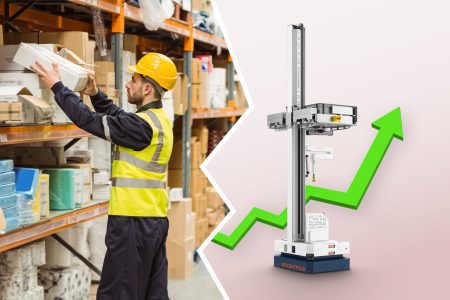How Rohlik Group became profitable in online grocery


Achieving profitability in online grocery is hugely challenging for any retailer. Here’s the formula that helped Rohlik Group, which delivers over a million orders each month, achieve profitability in Germany and the Czech Republic.
While grocery has always been a low-margin business, online grocers face additional costs such as picking and last-mile delivery. In brick-and-mortar stores, customers perform the picking themselves, but online grocers must absorb this cost. Similarly, last-mile delivery adds another layer of expense, as consumers typically expect home delivery at no additional charge.
These costs add a heavy burden for e-grocers. It’s no surprise that 89% of grocers are dissatisfied with their e-commerce profitability, losing an average of 13 cents per order.
However, there is hope. Europe’s two largest pure-play e-grocers, Rohlik and Picnic, recently announced profitability in key markets like Germany and the Netherlands.
We asked Vineta Bajaj, CFO of Rohlik Group, to share her perspective on how Rohlik achieved that:
1. Using automation to reduce fulfillment costs
Labor is the largest expense in order fulfillment, averaging 8% of revenue for grocers who pick manually. Automation can significantly reduce these costs. Beyond just cutting labor expenses, automation brings consistency and predictability to operations.
Rohlik uses robots in all its warehouses for this very reason. The company employs a Goods-to-Person system for picking and Brightpick Dispatcher robots for post-pick order consolidation and dispatch. Together, these technologies have cut labor needs by more than 80% across these processes.
💡 Vineta’s insight: “The only way online grocers can achieve reasonable profitability is through automation. By reducing dependency on labor, automation not only lowers costs but also ensures consistent throughput at a known cost. This makes profitability simply a matter of driving sufficient volumes.”
2. Building in-town fulfillment centers
Online grocery has four fulfillment models:


These models typically require a trade-off between picking and last-mile costs. Fulfilling from existing grocery stores minimizes last-mile costs but incurs high picking costs due to manual processes. Out-of-town FCs are highly centralized and easily automated but increase delivery times and last-mile costs because they are located far from customers.
The sweet spot, and the model Rohlik is using, is in-town FCs. These warehouses are large enough to be automated, serve a broad geographic area with a wide variety of products, and are close enough to customers to ensure reasonable last-mile costs and rapid delivery in as little as 60 minutes.
💡 Vineta’s insight: “Very large warehouses on the outskirts of a city that deliver the next day are becoming a thing of the past. Having smaller, reasonably-sized warehouses close to a city allows grocers to provide timely delivery while also enabling regional expansion, which significantly boosts profitability.”
3. Minimizing food waste
When margins are in the single digits, even a small reduction in food waste can mean the difference between profitability and loss.
This is where data and algorithms play a pivotal role. By predicting the right products to order based on seasonality and current market events, Rohlik reduces the risk of overstocking, which is the biggest source of food waste. This also contributes to reducing the company’s environmental footprint.
💡 Vineta’s insight: “Having the right algorithms to predict what the customer will order has huge benefits to minimizing food waste. Additionally, because we deliver directly to customers instead of relying on a wide store network, we can easily adjust our supply chain depending on current demand patterns. That’s how we’re able to achieve market-leading food waste levels of just 0.4%.”
4. Driving customer stickiness
Creating customer loyalty brings significant benefits to profitability by reducing churn and increasing lifetime value. Loyal customers also tend to order larger baskets, which improves unit economics.
Rohlik’s secret to driving customer loyalty is having the right product assortment for each market. It’s not about offering the widest product assortment, but the right one tailored to local consumer tastes. That’s why Rohlik also establishes a regional supply chain for each market, which enables it to cater to local preferences.
💡 Vineta’s insight: “We focus on productivity, but never at the expense of the customer. For example, we can increase our productivity by eliminating our butchery, but the customers want it. So at the cost of productivity, we choose to invest in it because that’s what customers want. Therefore, the customers come back and are sticky.”
5. Expanding in new markets gradually
Entering a new market involves significant upfront costs. Gradually expanding, rather than rolling out at full scale immediately, helps reduce these costs and accelerates the path to profitability.
For example, when Rohlik entered Munich, it initially offered customers 60-minute delivery slots instead of the current 15-minute slots. Similarly, Rohlik provides delivery within 3 hours in Munich, compared to 60 minutes in the Czech Republic. Over time, as Rohlik adds more vans and warehouses in Munich, it will reduce delivery times further. This phased approach has allowed Rohlik to achieve profitability in Munich while continuing to grow rapidly.
💡 Vineta’s insight: “We are extremely focused on not breaking the customer contract, which means never being late with deliveries. When you enter a new city, it takes time to learn local demand and traffic patterns, as well as build sufficient scale. That’s why we grow into new markets gradually, which also helps reduce upfront losses.”
👉 Watch our podcast with Vineta to dive deeper into Rohlik’s journey to become profitable. Available on Youtube, Apple Podcasts and Spotify.
Ready to embrace the future of AI? Brightpick offers an easy path to fully automate your order fulfillment using AI robots. Reach out to learn how we can optimize your operations.
Get started with Brightpick

